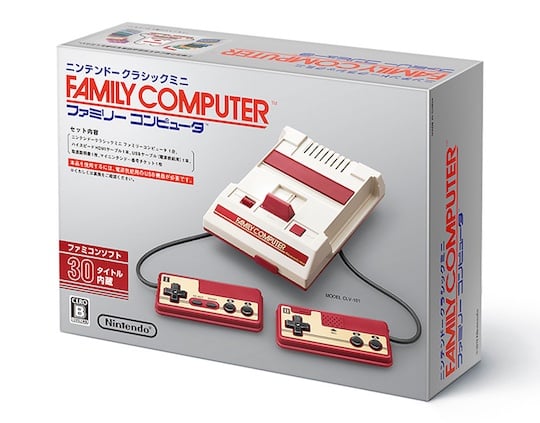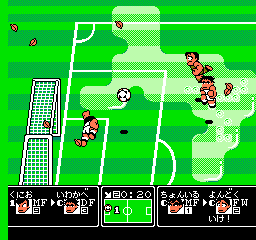Dream-Knife
Banned
My post was a joke.50 = 1/2 of 100... makes perfect sense, why is NTSC 60hz tho
I was going to say ms, but that's 1000. Our units of time make no sense I guess.
My post was a joke.50 = 1/2 of 100... makes perfect sense, why is NTSC 60hz tho
My post was a joke.
I was going to say ms, but that's 1000. Our units of time make no sense I guess.
It probably has something to do with our electricity.my question is for real tho... why 60hz? makes zero sense if you think about it50 doesn't either really, 48hz would have made sense or 72hz... everything else doesn't, really weird
And Nvidia is trumpeting up this tech now for hard dollars... lolthe 1080i output mode for GT ran internally at 576x960 and then was streched horizontally to 1728x960, that didn't look that great to my knowledge
Sonic the hedgehogs OST sounds better at 50hz.. facts.We will not talk about PAL 50hz.
WE WILL NOT TALK OF IT.
Yeah I remember that... On the SNES I was starting to play games so I didn't really realize that, and it was ok for the games I played (DKC1/2/3, Secret of Mana, Zelda, Mario All Stars, not really fast paced games...). Then from the PS1 I started to play 70% of my games in US versions (Resident Evil, Silent Hill, JRPGs, fighting games, etc) and then I got the Dreamcast where most of games even EU games had a 60hz option... And...We will not talk about PAL 50hz.
WE WILL NOT TALK OF IT.
It probably has something to do with our electricity.
Japanese N64 could play NA games if you swapped the back of the cartridge, and vice versa.I remember my dad telling me how much of a bitch it was and your best bet back then was to get a Japanese console, back then he said it never bothered him that games were in japanese (he never really played rpgs) and playing mario 64 not knowing what start you had to collect made the game way longer then it should have lmao
Due to the mains standard in the country, the refresh rate had to match the mains cycle rate otherwise it caused issues when fluorescent lights were used. It was an issue with early TV cameras.my question is for real tho... why 60hz? makes zero sense if you think about it50 doesn't either really, 48hz would have made sense or 72hz... everything else doesn't, really weird
You could run 60hz games with a converter in PAL lands though. I never saw any light issues, looked great but more pixelated, and iirc you had to connect with Scart or the picture was black and white.Due to the mains standard in the country, the refresh rate had to match the mains cycle rate otherwise it caused issues when fluorescent lights were used. It was an issue with early TV cameras.
That said, you can get NTSC resolution PAL (PAL-M) that was used in Brazil which lets you benefit from PAL colour encoding, important for broadcast TV.
Remember when Europe had to wait years for localizations? I think the best example of this was Super Mario Bros 3. A game with little to no text took three years to reach European market.
It would be a lot of time for a RPG, but it is a fucking platformer
I was around back then and I remembering being very upset how Nintendo didnt give a fuck.



-4.jpg)
Because it was released later … duhhhhMay I ask why? The PAL version was slower but suffers less slowdown overall and I find it more enjoyable to play tbh.
We will not talk about PAL 50hz.
WE WILL NOT TALK OF IT.
They would play in black and white and the image would rollIf (unoptimized) NTSC games sucked on PAL TVs, how about the reverse? Where there any unoptimized PAL games that were released in NTSC territories? Would they have similar issues, except in reverse (meaning they would be sped up instead of slowed down)?
And we had to watch shit like this.
the infamous PAL version of SEGA Touring Car, 20 unstable frames, the nightmare.
It's been going that way since the early 2000'sThis topic makes me worry about how the entire history of videogames and videogaming in Europe could end up forgotten, replaced by a version that simply parrots the American experience and makes it seem like a global truth.

That seems like it would cause problems of it's own. Running a 24fps movie at 25fps and inserting an extra frame would mean that the action is slightly sped up and you'd get judder once per second with the extra frame, no?One advantage you had was PAL TVs had better visual fidelity for movies and television. Converting anything shot at 24fps to 59.97fps is a real nightmare, while with PAL all you had to do was add an extra frame and call it a day. Pre-HD, American cinephiles go out of their way to get PAL transfers of movies for this reason. NTSC = Never Twice the Same Color, PAL = Perfect At Last.
Though, I feel sorry for you Sonic fans..
It's been going that way since the early 2000's

But isn't commodore, amiga and many of the console makers at the time from Europe?
It's even worse with the 1970s.This topic makes me worry about how the entire history of videogames and videogaming in Europe could end up forgotten, replaced by a version that simply parrots the American experience and makes it seem like a global truth.
Things did start to converge in the 90's, but what came before had a profound impact going forwards. Its an important period that's sadly rarely talked about, I think because it belongs not just to a pre-internet time, but more specifically because it was a pre-corporate time. The interesting stuff about the C64 and the Amiga for example was mostly done at a grass-roots level.
It was achieved not because of Commodore's corporate will, but in spite of it!
Omg, this! I've gotten help with that because I know people in the US, so I can ship various retro games to them for them to take it with them when they come to Norway, or if some I know visit the US. But then came Covid....It's still tough if you're into retro games. You have to import EVERYTHING. That means 20€ minimum to import a game an American could probably just take out of a trash can or something.
this always seems to surprise europeans, but the commodore 64 was actually very successful in the US as well. The amiga on the other hand struggled to find it's place (largely because commodore wanted it to be a serious business machine , a market completely dominated by pcs , were as the European branched embraced gaming)But isn't commodore, amiga and many of the console makers at the time from Europe?
The 50 and 60 hz power has to do with efficiency of early electrical generators , different designs ran best at those frequencies, since electricity predated cinema and especially video broadcast , they weren't even part of the equationmy question is for real tho... why 60hz? makes zero sense if you think about it50 doesn't either really, 48hz would have made sense or 72hz... everything else doesn't, really weird
They were shit too. I lost my U.S Chrono Trigger save a few times due to dodgy converters.Word. I bought an expensive as shit NTSC converter for the SNES just so I could play the games I really wanted in a timely manner. Plus, europe hardly got any JRPGs unless you imported from the US.
KoF95 made it to Europe with the ROM cartridge. It did not make it to the US. SEGA Europe support was fantastic really.I remember Richard leadbetter recommending the switch for Saturn to grab stuff like Grandia, Xmen vs SF, Metal slug, Kof. etc etc.
Yeah I picked up 95, I meant the subsequent ones.KoF95 made it to Europe with the ROM cartridge. It did not make it to the US. SEGA Europe support was fantastic really.
Grandia was not picked for translation and this was a huge mistake by SEGA US who did not want many RPGs back then.
The game has been translated by fans and can be played now. So at least this was somehow fixed. Same for many other games by the way.
Yeah. My father used to buy VHSs in the US. I remember those NTSC images looking... odd on our PAL TV, and when I went to the US myself in the 90s, the difference was clear. The Euro image looked somehow fuller and crisper compared to the noisier NTSC image. It's hard to explain if you never saw this on a CRT TV.One advantage you had was PAL TVs had better visual fidelity for movies and television. Converting anything shot at 24fps to 59.97fps is a real nightmare, while with PAL all you had to do was add an extra frame and call it a day. Pre-HD, American cinephiles go out of their way to get PAL transfers of movies for this reason. NTSC = Never Twice the Same Color, PAL = Perfect At Last.
It has become very easy. Nowadays you can find a cartridge that :I know of the fan translations but easily befuddled on how to go about the process of playing them.
Meanwhile all 3D Fighters made by SEGA were PAL optimized in speed and resolution.Go play Tekken 2 at 50hz, it was like fighting in water.
You had me up to the convenient cart part.It has become very easy. Nowadays you can find a cartridge that :
- removes the region locking of the console
- act as a memory card or as 1 MB cart or as 4 MB cart (with a switch on top)
- plays backup CDs
So it basically does everything with one convenient cart. You simply have to patch your Grandia game yourself, burn the translated images and that's it.
Meanwhile all 3D Fighters made by SEGA were PAL optimized in speed and resolution.
We will not talk about PAL 50hz.
WE WILL NOT TALK OF IT.
The PS2 arrived. 50hz on PS2 made me hate the system. It was very easy to put a chip/action replay to a PS1 to play imported games, on DC didn't need that, on PS2 it tooks many years and was SO expensive to put a chip in it (like 150€/$), so I didn't do it. And 50hz ruined Devil May Cry to me and god how FFX was awful and slow, I felt I was playing in slowmo, until today I keep an awful memory of the PS2 because of this.
This. A thousand times this.Fuck the EU PS2.
Yup. I remember there was a website 100% focused on showing the differences, could've been DF, side by side comparisons and zoom and all.This. A thousand times this.
I understand that it sounds crazy, but if you had a PAL PS2 and happened to know about the 50/60Hz thing and if you ever saw the two side by side... you'd hate your memories of the console, too. DMC was an absolute travesty.
Some of this applies to the N64 too. Seeing the NTSC version of Super Mario 64 or Mario Kart 64 running after having experienced the PAL version made you feel like you'd been cheated on.
